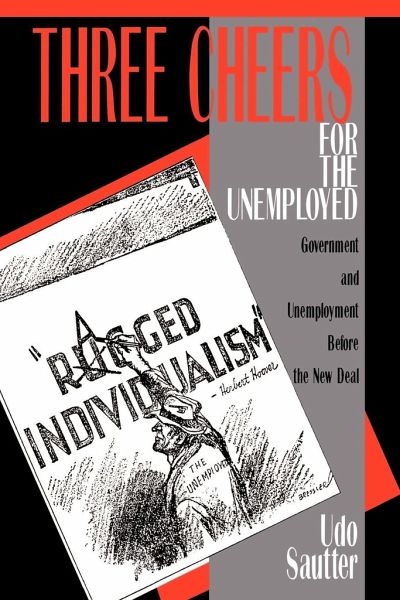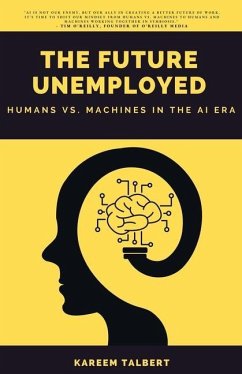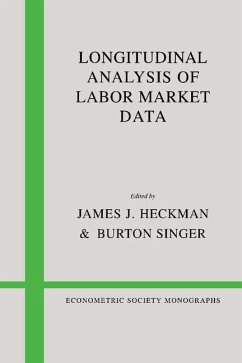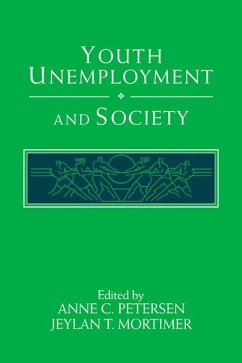
Three Cheers for the Unemployed
Government and Unemployment Before the New Deal

PAYBACK Punkte
23 °P sammeln!
This book demonstrates that the unemployment measures of the New Deal emanated from the reformist endeavors of the Progressive Age.Three Cheers for the Unemployed describes the beginnings and development of unemployment reform up to the New Deal. As a consequence of the large-scale industrialization after the Civil War, joblessness could no longer be considered to be caused by character defects, but had to be ascribed to societal forces. It became clear that traditional remedial measures could not cope with the problem adequately. In times of depression, the large number of unemployed far exce...
This book demonstrates that the unemployment measures of the New Deal emanated from the reformist endeavors of the Progressive Age.
Three Cheers for the Unemployed describes the beginnings and development of unemployment reform up to the New Deal. As a consequence of the large-scale industrialization after the Civil War, joblessness could no longer be considered to be caused by character defects, but had to be ascribed to societal forces. It became clear that traditional remedial measures could not cope with the problem adequately. In times of depression, the large number of unemployed far exceeded the aid capacity of private philanthropies and civic authorities. And the continuous expansion of the labor market made it obvious that local action would remain insufficient, especially if prevention could take the place of the less-desirable solution. By the time the United States entered World War I, reformist thinkers had devised the major tools that were later used to deal with unemployment. After the war and during most of the 1920s, these tools underwent thorough examination and refinement. The early years of the Great Depression saw them used tentatively. On the eve of the New Deal, a well-reasoned and successfully tested group of social programs was available. This book essentially refutes a social-control explanation for this process. It demonstrates that the unemployment measures of the New Deal emanated from the reformist endeavors of the Progressive Age.
Table of content:
List of figures and tables; Abbreviations used in the text or footnotes; Acknowledgments; 1. Introduction; 2. Perceiving the problem: 1870s to the entry into World War I; 3. Nascence and growth of the USES: World War I; 4. Pondering the issues: post-war to the mid-1920s; 5. Accepting the task: 1928-1933; 6. Epilogue; Appendix; Index.
Three Cheers for the Unemployed describes the beginnings and development of unemployment reform up to the New Deal. As a consequence of the large-scale industrialization after the Civil War, joblessness could no longer be considered to be caused by character defects, but had to be ascribed to societal forces. It became clear that traditional remedial measures could not cope with the problem adequately. In times of depression, the large number of unemployed far exceeded the aid capacity of private philanthropies and civic authorities. And the continuous expansion of the labor market made it obvious that local action would remain insufficient, especially if prevention could take the place of the less-desirable solution. By the time the United States entered World War I, reformist thinkers had devised the major tools that were later used to deal with unemployment. After the war and during most of the 1920s, these tools underwent thorough examination and refinement. The early years of the Great Depression saw them used tentatively. On the eve of the New Deal, a well-reasoned and successfully tested group of social programs was available. This book essentially refutes a social-control explanation for this process. It demonstrates that the unemployment measures of the New Deal emanated from the reformist endeavors of the Progressive Age.
Table of content:
List of figures and tables; Abbreviations used in the text or footnotes; Acknowledgments; 1. Introduction; 2. Perceiving the problem: 1870s to the entry into World War I; 3. Nascence and growth of the USES: World War I; 4. Pondering the issues: post-war to the mid-1920s; 5. Accepting the task: 1928-1933; 6. Epilogue; Appendix; Index.














